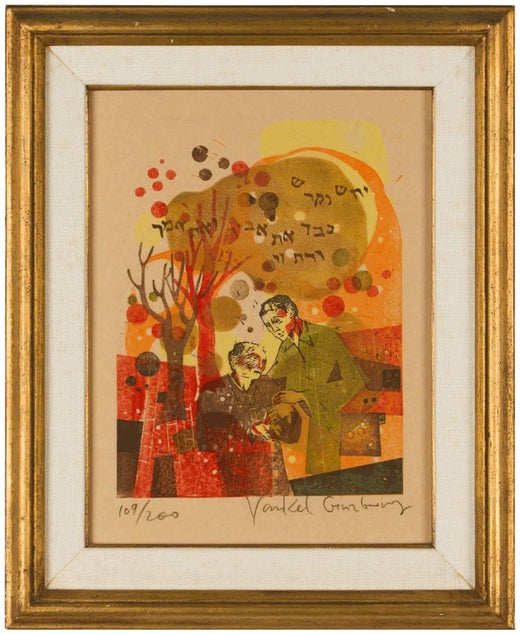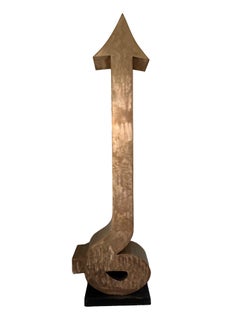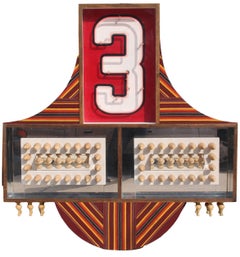Yankel GinzburgSphere, Pop Art Sculpturecirca 1985
circa 1985
About the Item
- Creator:Yankel Ginzburg (1945, Kazakhstani)
- Creation Year:circa 1985
- Dimensions:Height: 13.5 in (34.29 cm)Width: 12 in (30.48 cm)Depth: 6 in (15.24 cm)
- Medium:
- Movement & Style:
- Period:
- Condition:
- Gallery Location:Long Island City, NY
- Reference Number:1stDibs: LU4664991971
Yankel Ginzburg
Yankel Ginzburg was born Yuri Zhukov in 1945 in Alma-Ata, capital of the Kazakhstan Republic near the Chinese border. Ginzburg is a painter, sculptor, printmaker and statesman. Jewish on his mother’s side, Yankel and his family emigrated to Israel, where Ginzburg became the youngest student, to be admitted to the prestigious Institute of Art, from which he graduated with honors in 1965. He has won numerous awards and honors including the Whitney Museum of American Art - Unveiling of sculpture collection in Gondolas and One-man exhibition in Art Academy Moscow, among others.
You May Also Like
1970s Pop Art Mixed Media
Plastic, Wood, Mixed Media, Screen, Pencil
2010s Pop Art Abstract Sculptures
Metal
1970s Op Art Abstract Sculptures
Lucite, Plexiglass, Screen
1980s Op Art Abstract Sculptures
Glass, Lucite, Screen
1990s Op Art More Art
Metal
1960s Pop Art Sculptures
Nylon, Screen
Early 2000s Pop Art Abstract Sculptures
Metal
2010s Pop Art Mixed Media
Ceramic, Porcelain, Screen
2010s Pop Art Figurative Sculptures
Glass, Plastic, Mixed Media
2010s Pop Art Mixed Media
Metal
More From This Seller
View All1960s Pop Art Abstract Sculptures
Steel
1990s Pop Art Abstract Sculptures
Wood, Oil, Acrylic
1980s Pop Art Abstract Sculptures
Bronze
1980s Pop Art Abstract Sculptures
Neon Light, Mixed Media
1970s Op Art Abstract Sculptures
Metal
1990s Minimalist Abstract Sculptures
Plexiglass, Paper, Lithograph
Recently Viewed
View AllRead More
Romare Bearden’s Humanity Infuses His Bright, Bold Art
Through collage, painting and printmaking, the artist foregrounded Black life in America in revolutionary new ways.
Chryssa’s 1962 Neon Sculpture Was Way ahead of the Art-World Curve
By working with lettering, neon and Pop imagery, Chryssa pioneered several postmodern themes at a time when most male artists detested commercial mediums.


